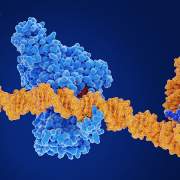Key genomic technologies of 2020: treatments old and new
In the second part of our review of the year’s genomic highlights, we look at the breakthroughs that are helping patients with rare disease and cancer
In a year where the Covid-19 pandemic has dominated so many aspects of life, it’s important to remember that other conditions didn’t just go away. Cancer and rare diseases continued to affect patients and their families, and clinical staff and researchers in the field kept working to care for, treat and find answers for them. Here are our picks for the biggest breakthroughs of 2020.
Editing the genome
Genome editing continues to enable research across every medical specialty, and this year it was used to create precise edits inside living mitochondria for the first time.
The CRISPR/Cas9 method of genome editing is not new, but certainly deserves a mention as its discoverers, Professors Jennifer Doudna and Emmanuelle Charpentier, received the Nobel Prize for Chemistry in 2020 for their work.
Earlier in the year, we reported that using CRISPR to treat heritable diseases such as sickle cell and beta-thalassaemia, and the results from that study now published, show how close these therapies are to being deployed in clinical practice.
Gene therapy in the clinic
The idea of gene therapy has been around for decades. Once it is understood that a disease is the result of a faulty gene variant, it seems logical that providing cells with a healthy copy of the gene could alleviate symptoms, halt degeneration or even reverse damage.
It has proved more complicated to implement, however, and has taken longer than many expected, leaving patients in limbo waiting for a treatment that was perpetually ‘just around the corner’.
At last, however, therapies are now being approved and arriving at the clinic. In 2020, a new treatment for Leber’s congenital amaurosis (LCA), an inherited retinal disorder that leads to visual degeneration and blindness in childhood, was approved for use in the NHS and has been administered to patients for whom there was previously no available treatment.
As well as classic gene therapies like this one, other genetic approaches are being used to target monogenic conditions. The CRISPR-mediated therapy for sickle cell and beta-thalassaemia mentioned earlier works to reactivate the body’s ability to make fetal haemoglobin, rather than to directly replace the mutation-carrying gene for adult form of the protein.
Old drugs, new targets
Advances in understanding cancer genomes – pinpointing genomic similarities between cancer drivers in different cancer types – continue to identify targets for new drug development, but also allow approved drugs to be repurposed.
A drug already used in NHS treatment of breast and ovarian cancer can also benefit patients with some types of prostate cancer. Olaparib is a PARP inhibitor, which blocks proteins in cancer cells that protect them from DNA damage and is known to be effective for women with BRCA-related cancers.
Men who carry BRCA alterations are at higher risk of prostate cancer and, when they develop it, onset is likely to be earlier, the cancer is likely to be more aggressive and the mortality rate is higher compared with BRCA-negative prostate cancer patients. The study looked at patients with prostate cancer who had mutations in 15 different genes involved with DNA repair, and found that olaparib could significantly delay the progression of their cancers.
Findings like this have so much potential because, unlike new treatments, they can be swiftly implemented into care pathways and make a difference to patients much sooner.
To read our round-up of 2020’s genomic highlights in the fight against Covid-19, see the first part of this article.
–









